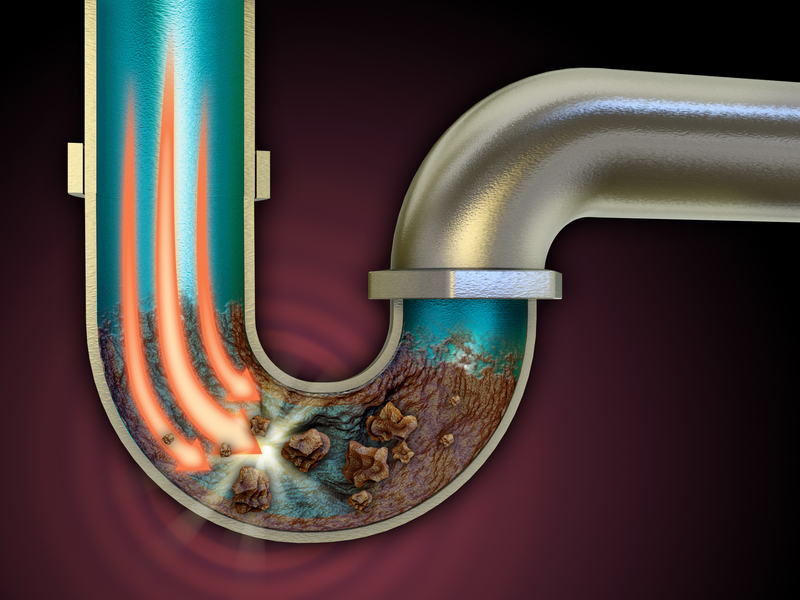Conquer Stovetop Burnt-on Residue with These Easy Steps
Posted on 05/09/2025
Conquer Stovetop Burnt-on Residue with These Easy Steps
There's nothing quite as frustrating as facing a stubborn, burnt-on mess on your stovetop after cooking a delicious meal. While these stubborn stains can seem impossible to remove, rest assured--there are proven, effective methods to conquer stovetop burnt-on residue and reclaim the spotless shine of your cooker. In this comprehensive guide, you'll learn varied techniques, essential tips, and maintenance practices to ensure your stove remains sparkling clean. Get ready to wave goodbye to charred food debris and sticky splatters!

Understanding the Nature of Stovetop Residue
Before you begin scrubbing, it's important to know what you're dealing with. Burnt-on residue on your stovetop is typically a mix of spilled food, grease, and carbonized sugars that get baked onto the surface during cooking. Over time, these residues become increasingly difficult to remove, especially if left unaddressed. Different stove surfaces--whether glass, ceramic, stainless steel, or enameled--require specific cleaning approaches, so make sure to check your manufacturer's guidelines before starting.
Essential Tools and Supplies
To effectively eliminate stubborn stovetop stains, gather these essential supplies:
- Baking soda (a gentle, natural abrasive)
- Distilled white vinegar (for cutting through grime)
- Microfiber cloths (for polishing and residue removal)
- Soft sponge or scrubber (non-abrasive for sensitive surfaces)
- Plastic scraper or razor blade (be cautious with glass)
- Dish soap and warm water
- Old toothbrush (for tricky corners)
- Protective gloves (if you have sensitive skin)
- Store-bought stovetop cleaner (check for stovetop compatibility)
Step-by-Step: Remove Burnt-on Residue from Your Stovetop
1. Allow the Stovetop to Cool Completely
Safety comes first! Never attempt to clean a hot or even warm stovetop, as you risk burns and may set the residue even more by smearing it. Patience pays off--wait until the surface is cool to the touch.
2. Remove Loose Debris
Using a damp cloth or paper towel, gently wipe away any loose crumbs, dust, or debris from the surface. This prep step will ensure you're only dealing with burnt-on greasy stains during the deep clean.
3. Apply Baking Soda Paste
- Mix baking soda with a small amount of water to form a thick paste.
- Spread the paste generously over the tough, burnt spots.
- Let it sit for at least 15-20 minutes. For especially tough residue, leave the paste on for an hour or more--cover with a damp towel to prevent drying.
Why baking soda? It works both as a gentle abrasive and a deodorizer, breaking down residue without scratching most surfaces.
4. Loosen Burnt-on Residue with Vinegar
- Pour distilled white vinegar into a spray bottle and lightly mist the baking soda-covered areas.
- Watch as the fizzing action goes to work lifting stubborn stains and burnt debris.
This tried-and-tested combination is perfect for conquering tough stovetop stains without harsh chemicals.
5. Gently Scrub the Stovetop
- Use a soft sponge, scrubber, or microfiber cloth to gently rub the surface in slow, circular motions.
- For persistent, stuck-on bits, a plastic scraper or razor blade (held at a low angle) can be helpful--just be cautious with glass or ceramic tops and avoid pressing too hard.
- An old toothbrush works wonders in crevices and around burners.
6. Clean Up and Rinse
After scrubbing, wipe down the stovetop with a damp cloth to remove all paste and loosened residue. Rinse the cloth and repeat as needed until all cleaning agents are gone.
7. Final Polish
- Buff the clean, dry surface with a fresh microfiber cloth for a streak-free shine.
- For glass or ceramic stovetops, a specialty cleaner or polish can enhance the finish.
Alternative Methods for Stubborn Stains
Sometimes, those burnt-on marks are especially persistent. Here are a few additional approaches to help you conquer burnt stovetop residue:
1. Steam Cleaning Method
- Fill a small pot with water and bring it to a boil on the stove. Once steaming, turn off the heat and let the steam loosen stubborn residue for 10-15 minutes.
- Wipe the surface clean with a damp cloth afterwards.
This natural method is ideal for tackling tough, caked-on food without chemicals.
2. Commercial Stovetop Cleaners
- If household remedies aren't doing the trick, consider using a store-bought stovetop cleaner designed specifically for your stove's material.
- Always read labels for compatibility and follow instructions precisely for safe and effective stain removal.
3. Razor Blade Technique for Glass Stovetops
- Only for glass/ceramic surfaces: Hold a razor blade scraper at a 30 to 45-degree angle and carefully scrape off burnt residue, working in single, smooth strokes to avoid scratching.
- Always use a new, clean blade and follow up with a gentle wipe-down.
*Caution: Never use a razor blade on gas, enameled, or stainless cooktops!*
Tips for Different Stovetop Types
Not all stovetops are created equal, and each requires specific care:
- Glass/Ceramic: Avoid abrasive cleaners and always use soft sponges and approved glass stovetop cleaners.
- Stainless Steel: Wipe with the grain, and avoid bleach or any products containing chlorine. Baking soda and vinegar are safe, but always rinse thoroughly and buff dry.
- Gas Ranges: Remove burner caps and grates for soaking in warm, soapy water. Scrub the stovetop and clean burners separately.
- Enamel: Use gentle pressure and avoid steel wool or heavy abrasives to prevent chipping.
Routine Maintenance: Prevention is Key
The best way to prevent burnt-on residue from building up is regular cleaning and quick attention to spills. Here are some simple habits to keep your stovetop in top shape:
- Wipe down your stovetop after every use, even if it looks clean.
- Clean up spills immediately to prevent hardening and burning the next time you cook.
- Perform a deep clean at least once a week.
- Consider using a removable burner cover or liner to catch drips (for gas stoves).
Homemade Cleaners: Powerful & Eco-Friendly Alternatives
You don't always need to rely on harsh chemicals. These homemade stovetop cleaning solutions are both powerful and environmentally safe:
- Lemon Juice & Baking Soda: The acidity of lemon combined with the gentle abrasion of baking soda helps cut through grease and leaves a fresh scent.
- Hydrogen Peroxide & Baking Soda: For stubborn discoloration, form a paste with hydrogen peroxide and baking soda, let it sit, and then wipe clean.
- Castile Soap Solution: Dilute a few drops in water for regular wipe-downs.
Expert Tips to Prolong Your Stovetop's Life
- Read the Manual: Each make and model has specific recommendations--never assume one cleaning technique fits all.
- Avoid Bleach and Ammonia: These can cause discoloration and damage sensitive stove surfaces.
- Handle Scrapers Carefully: Scrapers cut through residue but also scratch--always work gently!
- Polish Stainless Steel: A final wipe with a tiny bit of olive or mineral oil brings out a sparkling shine.
- Keep Burners Dry: Moisture beneath burners can lead to rust or performance issues--always dry thoroughly.
Stubborn Stovetop Residue: When to Call in the Pros?
If you've tried everything and still struggle with baked-on grime, it may be time to call a professional appliance cleaner. Commercial services use specialized tools and products not available to consumers--perfect for restoring a heavily neglected or damaged stovetop surface.

Frequently Asked Questions
Can I use steel wool on my stovetop?
*Avoid using steel wool or abrasive pads* on glass, ceramic, enamel, and stainless steel stovetops, as they can cause scratches and other damage. Stick to soft cloths and non-abrasive scrubbers.
What should I do if the residue won't come off?
Repeat the baking soda and vinegar treatment; tough stains may require multiple applications. If the residue is still stubborn, try a commercial cleaner or consult a professional for restoration.
Is it safe to use vinegar on any stovetop?
Vinegar is generally safe for glass, ceramic, and stainless steel. However, avoid using it on cast iron or certain enamel finishes unless the manufacturer approves it.
How often should I deep-clean my stovetop?
For best results, deep-clean your stovetop at least once a week, and address spills as soon as possible to prevent buildup.
Conclusion: Enjoy a Spotless, Safe Cooking Space
With these easy, effective steps, you can conquer burnt-on residue on your stovetop and keep your kitchen looking and smelling fresh. Regular care not only keeps your stove shining, but also improves its performance and longevity. So, the next time you face a tough, sticky spill or burnt mess, remember these techniques--you'll be ready to banish burnt stovetop stains for good!
Try these methods today and enjoy your sparkling, residue-free stovetop tomorrow--your kitchen (and your future meals) will thank you!




